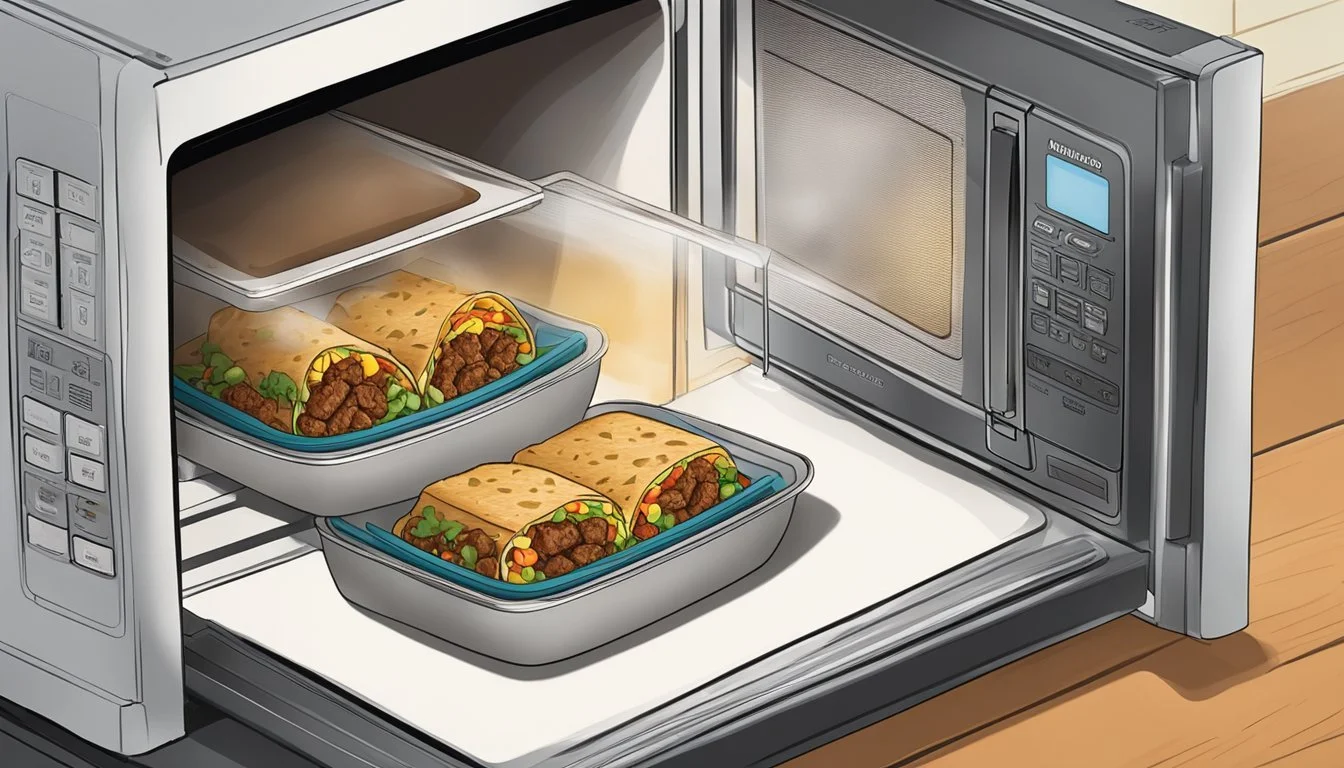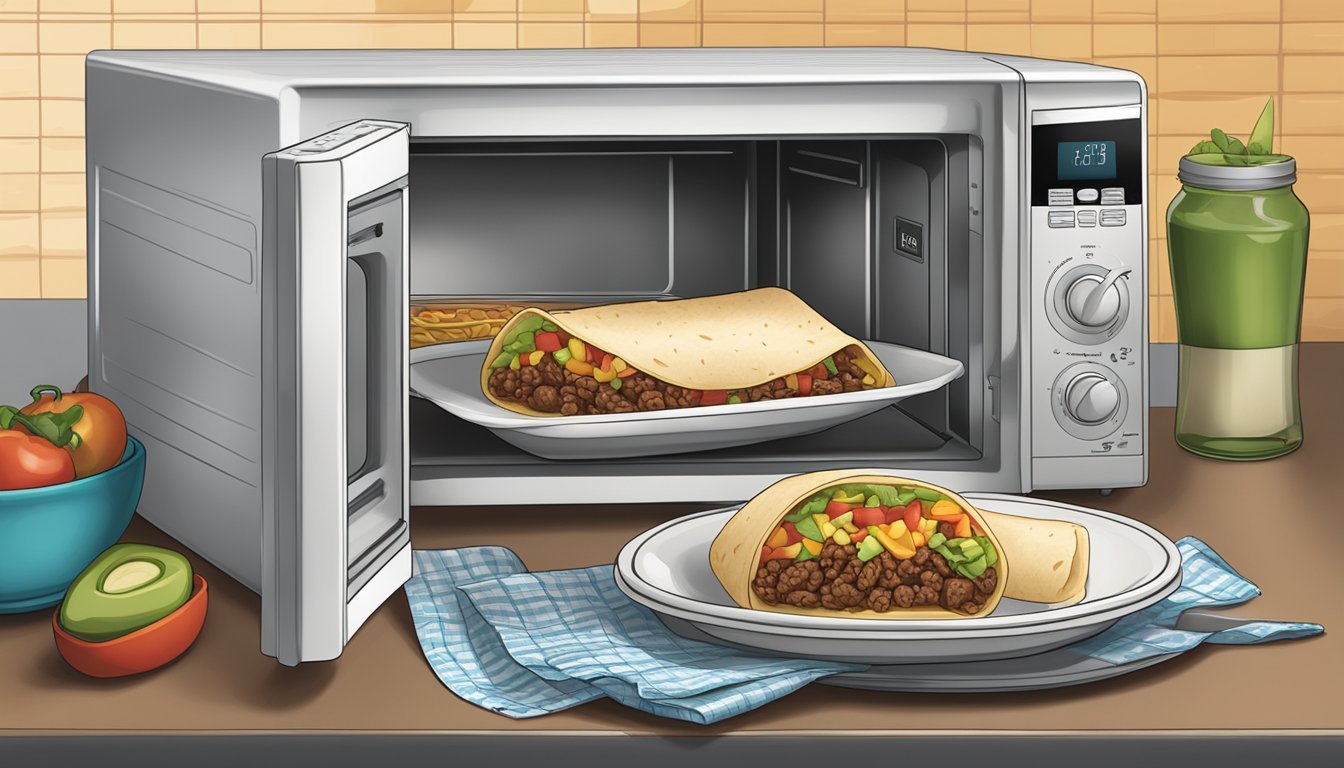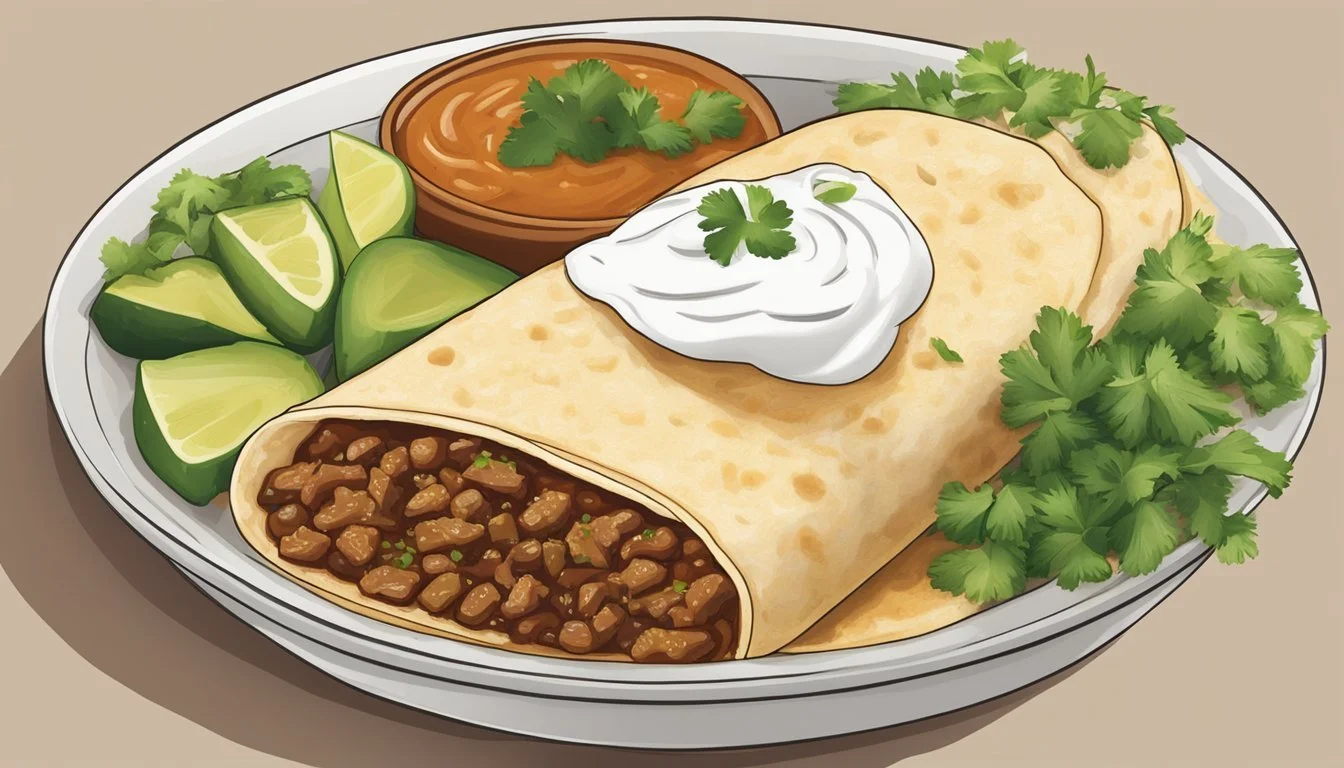How to Reheat El Monterey Beef & Bean Burritos for Perfect Flavor
Reheating El Monterey Beef & Bean Burritos can be a game-changer for those looking to enjoy a quick and satisfying meal. The key to perfectly reheating these burritos is maintaining their original flavor and texture while ensuring they are thoroughly warmed.
Understanding the best methods is essential to getting that fresh taste every time. The oven is a reliable option, allowing for an even heat distribution that keeps the burrito's integrity intact. Additionally, the skillet method, which involves a bit of oil and constant monitoring, can help achieve a crispy exterior.
For those who prioritize convenience without sacrificing too much on quality, the microwave offers the quickest solution. Each method has its own merits, making it essential to choose the right one based on your time and resources.
Understanding the Basics of El Monterey Beef & Bean Burritos
El Monterey Beef & Bean Burritos are a convenient meal option featuring savory beef, beans, and authentic Mexican spices, all wrapped in a fresh-baked flour tortilla. It's important to consider the burritos' composition and food safety to maximize the benefits of this easy-to-make meal.
Composition of El Monterey Burritos
El Monterey Beef & Bean Burritos include beef, beans, and flour tortillas, combined with Mexican spices to create a flavorful experience. Each burrito provides approximately 310 calories and contains about 9 grams of protein. The protein mostly comes from beef and beans, making it suitable for a quick, protein-rich meal.
These burritos also contain around 330 mg of sodium per serving. Cheese, corn, and black olives are often added in different variations, enhancing flavor and nutritional content. They are frozen for convenience, allowing them to be stored and prepared later.
Food Safety Considerations
To ensure food safety, it’s crucial to follow the recommended storage and reheating instructions. Keep burritos frozen until ready to eat. When reheating, whether in a microwave, oven, or air fryer, reach an internal temperature of 165°F to eliminate harmful bacteria.
Microwave reheating is the quickest method, typically taking 1-2 minutes. If using an air fryer, cook at 350°F for about 5-7 minutes until crispy. Always check the exact cooking time for your appliance, as it can vary. Properly reheating ensures both safety and optimal taste.
Adhering to these guidelines will ensure that your El Monterey Beef & Bean Burritos are both delicious and safe to consume.
Preparation Before Reheating
Proper preparation ensures the best taste and texture when reheating El Monterey Beef & Bean Burritos. This involves handling the frozen burritos correctly and using effective defrosting methods.
Handling Frozen Burritos
When handling frozen burritos, food safety is a top priority. Always keep the burritos at a consistent temperature in the freezer to avoid freezer burn. Freezer burn can adversely affect the flavor and texture by causing the tortilla to become dry and tough.
Use a sealed bag or container to store the burritos. If the original packaging is damaged, transfer the burritos to airtight containers. Labeling containers with dates helps to keep track of storage duration. Consuming the burritos within a few months ensures optimal taste.
Defrosting Methods
Defrosting helps achieve even heating when reheating. There are two effective methods: refrigeration thawing and microwave thawing. For refrigeration thawing, transfer the burrito to the fridge 24 hours before reheating. This slow defrosting method maintains quality and minimizes the risk of bacterial growth.
For a quicker option, use the microwave. Place the burrito on a microwave-safe dish and use the defrost setting, checking and flipping the burrito every minute. This method is faster but requires attention to avoid partial cooking. Ensure the burrito is unwrapped to allow even defrosting.
Reheating Techniques
Reheating El Monterey Beef & Bean Burritos can be done in several ways to ensure they remain delicious. Each method requires specific steps for optimal results.
Microwave Method
Place the burrito on a microwave-safe plate. Cover it with a damp paper towel to prevent it from drying out. Heat on high power for 45 seconds to 1 minute for a small burrito; larger ones may need 1.5 to 2 minutes. Flip the burrito and reheat for another 30 seconds to 1 minute. Check the internal temperature using a meat thermometer; it should read at least 165°F to ensure even heating.
Oven Method
Preheat the oven to 350°F. Wrap the burrito in aluminum foil to keep it moist. Place it on a baking sheet and bake for 25-30 minutes. For a crispier texture, open the foil for the last 5 minutes. Check the internal temperature to make sure it reaches 165°F. This ensures even heating.
Stove Method
Add a few drops of oil to a skillet and heat over medium-low. Place the burrito in the skillet. Increase the heat to medium and press down with a spatula. Cook for about 4-5 minutes on each side until the internal temperature reaches 165°F. This method gives a crispy exterior while keeping the inside moist.
Air Fryer Method
Preheat the air fryer to 350°F. Place the burrito in the air fryer basket without foil. Heat for 5-8 minutes, flipping halfway through for even heating. Ensure the inside reaches an internal temperature of 165°F. The circulating hot air creates a crispy texture outside while keeping the inside moist.
Toaster Oven Approach
Preheat the toaster oven to 350°F. Place the burrito on a baking sheet. Wrap in aluminum foil for a softer burrito or leave uncovered for a crisper texture. Bake for 20-25 minutes. Check the internal temperature; it should be 165°F. This method heats the burrito evenly while allowing for adjustments based on textural preference.
These reheating techniques help maintain the quality and taste of El Monterey Beef & Bean Burritos. Each method suits different preferences for texture and convenience.
Achieving Optimal Texture and Moisture
To reheat El Monterey Beef & Bean Burritos effectively, focus on preventing sogginess and creating a crispy texture. Both goals can be achieved with specific techniques and careful attention to detail.
Preventing Sogginess
Sogginess often results from excessive moisture or improper heating methods. Microwaving a burrito can lead to a soggy tortilla. To avoid this, wrap the burrito in a damp paper towel before microwaving. This helps retain moisture inside the tortilla without making it wet.
Alternatively, using an oven can prevent sogginess. Preheat the oven to 350°F (175°C) and place the burrito on a baking sheet. Cover it with aluminum foil to trap steam and keep the filling moist. Bake for about 10-15 minutes, removing the foil in the last few minutes to dry out any excess moisture.
Creating Crispy Texture
Achieving a crispy texture requires methods that circulate hot air evenly around the burrito. An air fryer is excellent for this purpose. Preheat the air fryer to 400°F (204°C). Place the burrito in the basket and cook for about 15 minutes, turning every 5 minutes to ensure even crisping. This method allows the tortilla to become crispy while maintaining a moist interior.
If using a skillet, heat a small amount of oil over medium-high heat. Place the burrito seam-side down and cook for 2-3 minutes per side until crisp. This direct contact with the hot surface creates a crispy exterior.
Using these techniques, you can enjoy a reheated El Monterey Beef & Bean Burrito with an optimal balance of texture and moisture.
Enhancing Flavor and Serving Suggestions
To make El Monterey Beef & Bean Burritos more enjoyable, consider adding complementary toppings and condiments to balance and enhance their flavors. These additions can elevate a simple microwave meal into a satisfying experience.
Complementary Add-Ons
Adding sour cream provides a creamy texture and helps to balance the rich flavors of beef and beans. Guacamole brings a fresh and buttery element, perfect for cutting through the spices.
For added heat, include green chiles or hot sauce. Cheddar cheese or shredded cheese can be melted on top for a gooey, satisfying layer.
Consider sprinkling some Mexican spices like cumin, paprika, or chili powder to give the burritos a deeper, more complex flavor profile.
Appropriate Condiments
Provide salsa and enchilada sauce as dipping or pouring options. Salsa adds a tangy and slightly spicy taste that complements the burrito fillings, while enchilada sauce offers a rich, savory bath for the burritos.
For those who enjoy extra heat, hot sauce can deliver varying levels of spice and acidity. A small dollop of sour cream helps to cool down spicier elements and adds creaminess.
Try to include a combination of these condiments to suit different tastes and preferences.
Variations and Alternatives
Whether catering to specific dietary preferences or exploring new flavors, there are many options for customizing burritos. From vegetarian versions to homemade recipes, there's something for everyone to enjoy.
Vegetarian and Other Dietary Options
Vegetarian variations offer a delightful twist on traditional beef and bean burritos. Using refried beans, black beans, or pinto beans provides protein without meat. Adding roasted vegetables like bell peppers, zucchini, and onions can enhance flavor and texture.
For a vegan option, consider plant-based meats or tofu. Utilizing vegan cheese ensures the burrito remains dairy-free. Incorporating spicy salsa or creamy avocado can add richness without compromising on dietary restrictions.
For those focused on health, substituting the tortilla with a low-carb version or using whole-grain tortillas can be beneficial. Also, adding quinoa provides a nutritious alternative to traditional fillings and boosts protein content.
Homemade Burrito Recipes
Creating burritos at home allows for customization based on preferences. For a classic beef and bean burrito, combining ground beef, refried beans, and cheese wrapped in a tortilla is a great starting point.
Leftover burritos are also a practical and tasty option. Using last night’s roast chicken, sautéed vegetables, and cheese can make a satisfying meal. For breakfast burritos, incorporating scrambled eggs, bacon, and breakfast sausage adds a hearty start to the day.
Using an air fryer or oven to reheat homemade burritos ensures they are crispy on the outside while maintaining a soft interior. This method helps retain the flavors and textures of the original ingredients.





